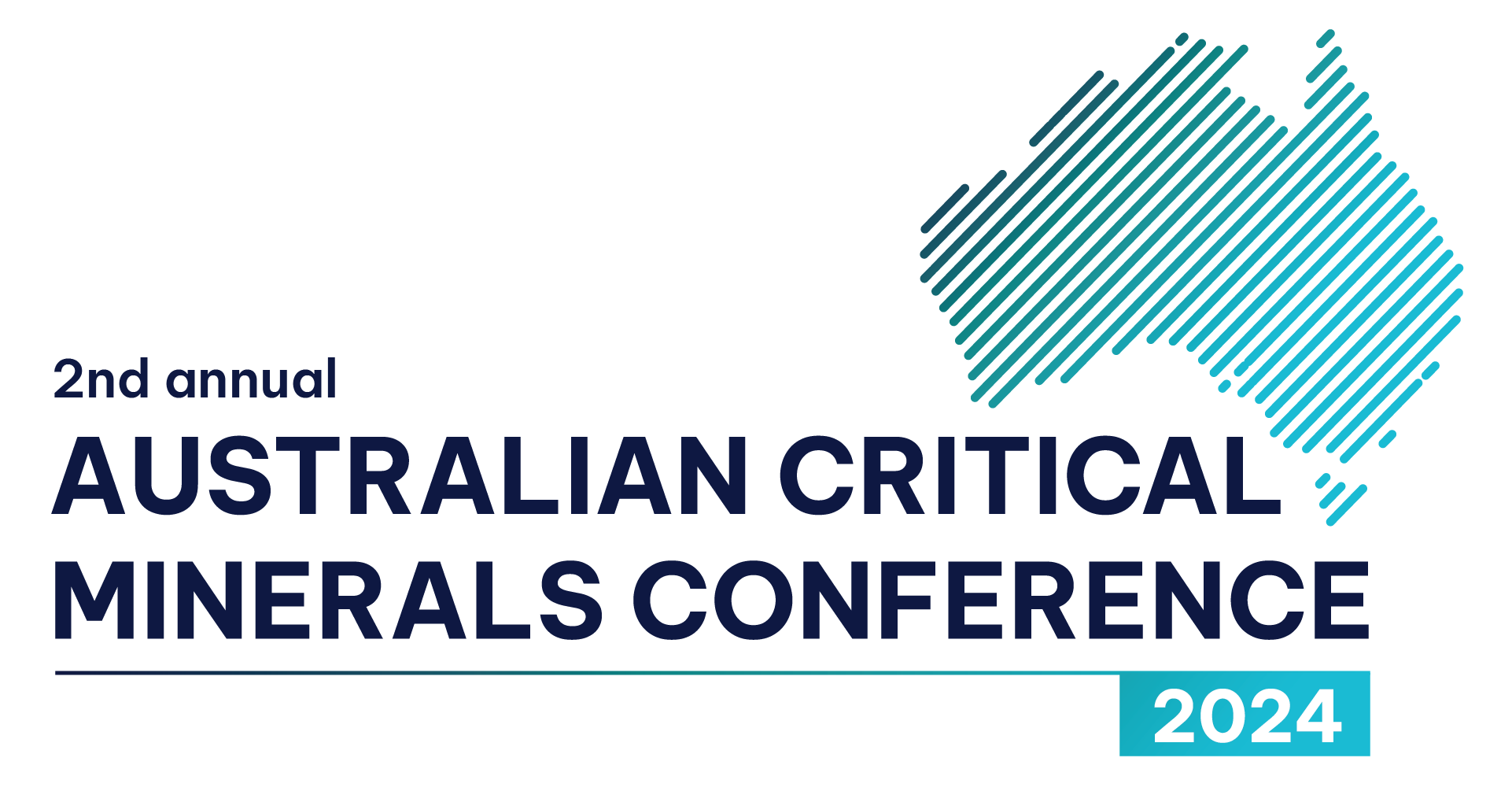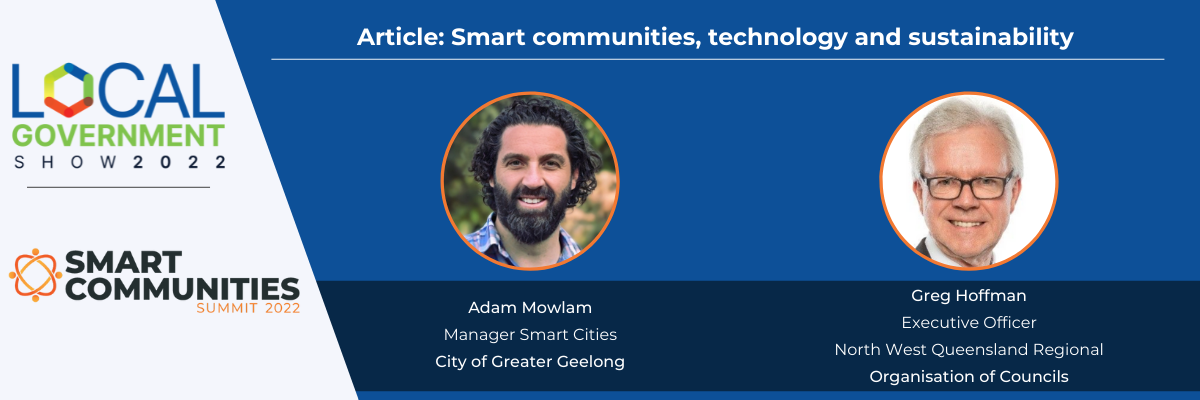One of the most exciting aspects of smart communities is their potential to supercharge sustainability improvements through technological transformation. A glance at smart city mega-projects around the world such as Mexico’s Smart Forest City, Saudi Arabia’s The Line, and Japan’s Woven City reveals a common thread – enhanced sustainability through smarter energy usage, recycling, green spaces, water conservation and more.
The possibilities for improvement are endless, which raises a dilemma – how can local councils in Australia prioritise their technological investment? And how can regional councils overcome the unique challenges imposed by remote locations?
We spoke with Adam Mowlam, Manager Smart Cities at the City of Greater Geelong, and Greg Hoffman, Executive Officer at the North West Queensland Regional Organisation of Councils, to gain their insights into the smart, sustainable technologies that will change the game for local councils, along with tips on investment prioritisation and driving technological change in remote areas.
Prioritising investment
There are several ways local councils can prioritise investment in technological transformation. It is important to avoid a haphazard approach or select investments based on trying to keep different divisions/stakeholders happy. Other mistakes include always pursuing the lowest-hanging fruit, or getting the order wrong – for example, data optimisation must come first in any digital transformation project.
Instead, investments should be assessed and prioritised by their strategic contribution to the end goal (e.g. reaching net zero), their value, the risks involved and the council’s current capability (and capacity) to deliver.
Sustainable technology maturity curve
Mowlam says that it’s clear local councils in Australia have chosen a technology-led pathway to reaching net zero and typically follow a maturity curve: “Many began with the adoption of solar installations and farms and the replacement of halogen lamp with LEDs in street lights. Recently we are seeing a maturing focus across waste management, water consumption and sustainable transport.”
“As an example, reaching net zero for waste management has seen technology being central to smart bins and trip optimisation, e-waste kiosks, AI-powered waste sorting machines to the real time data underpinning inventory management across industrial-scale circular economy projects.”
Mowlam notes the vital role of IoT and increased connectivity in transformational initiatives. “A continuous stream of technology innovations and cheaper sensors producing volumes of data and drawing insights […] are enabling tools to be developed that allow faster, evidence-based responses to not just reaching net zero targets, but also responding to liveability challenges.”
Two such uses of sensor data and useful contextualised information include using LiDar (a laser based remote sensing method) for smarter management of tree pruning near powerlines, and using sensors to support biodiversity at the local level. “Temperature, water flow and quality and ambient light can be measured and interventions enacted to ensure endangered species are provided with the right environment to thrive,” says Mowlam.
Residential housing design
Local councils around Australia are increasingly recognising the role of housing design in building smart, sustainable communities. In early September, a meeting of building ministers in Sydney agreed to new, seven-star efficiency standards from Australian housing that will come into effect in October 2023.
“Australia’s preferred residential housing design, i.e., ‘McMansions’ and boxes on concrete slabs, rely on heavy energy consumption for heating and cooling and will continue to put pressure on electricity generation capacity particularly as the transition away from coal powered generation gathers pace,” says Mowlam. “Whilst this is only one element of sustainability and overall environmental impact, urban planners and building designers need to give greater priority to lowering on-site electricity demand as this is a major contributor to cost-of-living pressures.”
Distance and technology challenges
Councils in rural and remote areas across Australia have a unique set of challenges that will continue to hamper net-zero transformation unless addressed.
“Councils in rural and remote areas outlay significant money on fuel for the operation of their heavy vehicle fleet involved in road construction – semi-trailers, dozers, graders, rollers and water trucks,” says Hoffman. “These use either diesel or unleaded petrol. The move away from these fuels to hydrogen fuel cell technology, electric and hybrid energy sources will reduce carbon emissions. In addition, alternatives to asphalt/bitumen-based road surfaces such as plastics, polymers and glass compounds have the potential to further reduce emissions.”
However, Hoffman warns that it’s unrealistic to expect rural and remote councils to lead these changes. “They will be the last to be able to afford these alternatives until they’ve been developed to suit the environment of Outback Australia and unit costs have been reduced to make them feasible.”
Hoffman says IoT devices and drones are already demonstrating success in reducing emissions by reducing the time and cost involved in travelling long distances for system monitoring and switching operations.
Off-grid generation
Another significant cost for councils in rural and remote areas is the electricity required for water and sewerage treatment and pumping operations.
“Investment in wind, solar and battery technologies provide councils with alternative tariff options when available through commercial/retail electricity markets,” says Hoffman. “In addition, off-grid generation utilising these technologies will support very remote locations reliant on diesel-powered electricity generation systems.”
Examples of successful (and ongoing) diesel-to-renewable energy conversions across Australia include Rottnest Island, Thursday Island and the Bass Strait islands.
Looking to the future, Hoffman highlights another potential energy source in geo-thermal power generation. “However, the technology is yet to prove effective at the low water temperatures available from the Great Aterian Basin in Western Queensland.”
Join us at the Smart Communities Summit 2022
Smart Communities Summit 2022 examines the impact of new technologies on people’s everyday lives, jobs, recreational activities and mobility needs. Gain strategies and insights on how to deploy technology to create a smart community that works for your people and your place.
If you are a local government leader or practitioner working on innovation projects for your community, let Smart Communities Summit navigate you through the ideas, successes, challenges, opportunities and creative mindsets of your peers so that you can implement new strategies and projects for the benefit of your community.
To view the Smart Communities Summit agenda click here or download the brochure here.

